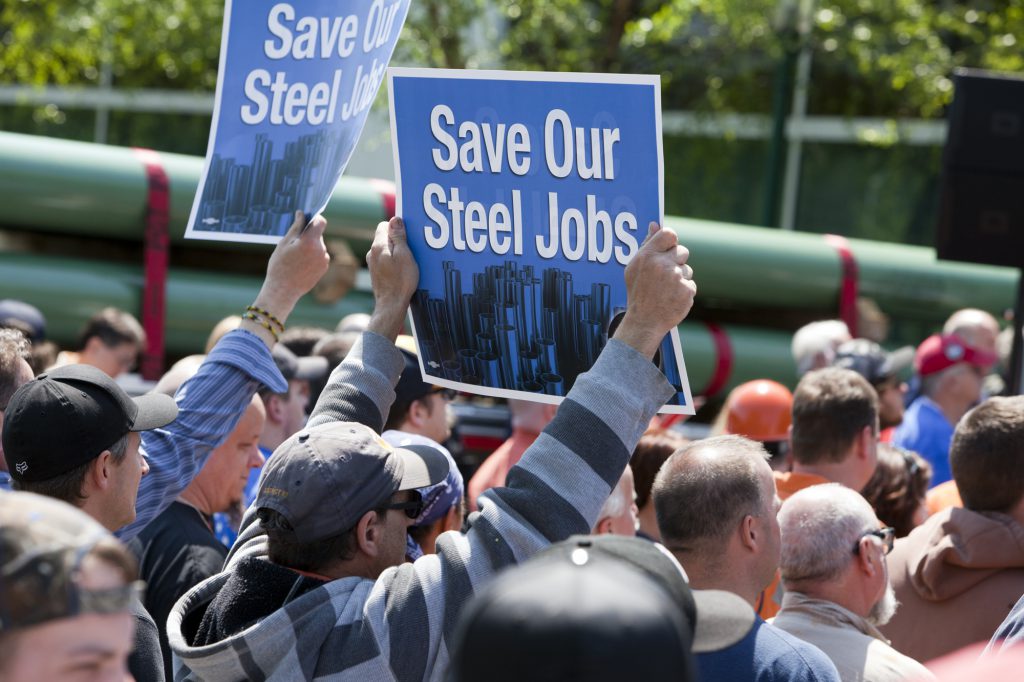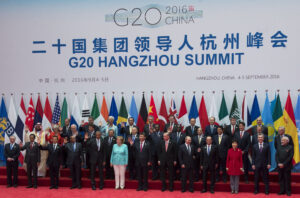
The steel and aluminum tariffs prompted a panic. Let’s put things into perspective.
The Trump administration’s recent decision to place tariffs on steel and aluminum imports has led to quite a lot of hyperbolic rhetoric in the media about trade wars. However you feel about other actions by the current commander-in-chief, what seems to have been ignored in this debate is that this is not about a trade war starting.
It is about realizing that the United States already is in one, and we have not been doing enough to protect jobs in critical industries that are being lost to unfair competition.
In 2011, half of the world’s 46 top steel companies were state-owned, and these state-owned companies accounted for 38 percent of global production. These foreign governments provide a wide array of subsidies to their steel industries, including grants, tax breaks, subsidized loans and debt forgiveness, the provision of inputs at below market rates, direct equity infusions, and more.
These factors lead to “uneconomic additions to capacity”—increases in capacity that don’t make economic sense because they are not driven by demand.
Consequently, state-owned manufacturers undercut the market prices that U.S. private businesses offer. The average unit value of imported steel declined $259 per ton (23.1 percent) between 2011 and January/February 2014.
As a business, if you can't compete on a level playing field and go under, that’s fair. But when you can't compete because your competition gets subsidized or is simply bankrolled by a foreign government, then that's cheating — and tariffs exist to combat that practice.
U.S. steel producers filed 40 antidumping and countervailing duty petitions in 2013 and the first two months of 2014 in response — and targeted tariffs on many individual steel products were put into place — but it wasn’t enough. Countries like China just rerouted their steel through countries like Vietnam, while the overall global overcapacity crisis continued unabetted.
By the time President Trump took office, it was clear a more comprehensive solution was needed.
A Legacy of Broken Promises
Let’s be clear: Trump is not alone in arguing that China is behind the global overcapacity of steel. This issue was a top concern for the Obama administration.
The BBC’s coverage from 2016’s G20 summit lays this out nicely. Not only did former President Barack Obama use his final G20 summit to push for action on China’s industrial overcapacity, but European representatives and others from around the world agreed with him. One of the outcomes of the 2016 summit centered on steel, with nations agreeing to form a “global forum” to find ways to reduce steel production and stabilize the market.

After that meeting, G20 leaders pledged to work together to address excess steel capacity that has punished the global industry with low metal prices for years while raising tensions between China and other major producers.
China even admitted it is producing too much steel, and has repeatedly pledged to reduce the amount of steel it makes. It repeatedly has broken those promises; its steel production even increased in 2016.
While commitments were made on an international stage, and encouraging rhetoric continued, actions to rectify the situation were not materializing. The result: Tens of thousands of steel workers in the United States faced layoffs and dozens of facilities closed because of unfairly traded steel imports. On the aluminum front, there’s just five aluminum smelters left in the United States, and only one that can produce high purity aluminum needed for fighter jets like the F-35.
When Trump took office, he promised quick action to resolve the steel crisis. And given China’s legacy of broken promises, it was honestly the next logical step.
A Necessary Action
By that point, the crisis was so bad that America’s ability to produce enough steel and aluminum for its defense needs was in question. That led the administration to launch a national security review, known as a Section 232 investigation, to determine where things stood and recommend action, if needed.
The Commerce Department, which oversaw the investigation, did find that foreign imports threaten our national security, and recommended action. Trump opted to issue a 25 percent tariff on steel imports and a 10 percent tariff on aluminum imports, granting some countries exclusions and negotiating a quota with South Korea.
While Trump deserves some credit, he did make plenty of mistakes along the way. Initiating the investigation and then sitting on it for months caused American steel imports to spike by 15.5 percent in 2017, as foreign steel makers rushed in products ahead of tariffs that have yet to materialize.
By the time the investigation wrapped-up, roughly 13,500 Americans had been laid-off because of an unprecedented surge in subsidized steel imports from countries like China.

And it’s important to remember that the steel and aluminum tariffs are essentially emergency room triage on domestic industries that have been injured by a massively distorted steel market, warped by state-led competitors from China. We should be under no illusion that tariffs are a silver bullet to solving this problem.
Lawmakers must still implement policy to boost domestic demand for manufactured products, prevent currency manipulation, and contain Chinese mercantilism, particularly on intellectual property theft and other market barriers like mandatory partnerships and forced technology transfers.
However, something had to be done to protect American steel and aluminum, given its importance to our national security. And while elite commentators can ramble on about trade wars, it’s important to take a step back and remember that trade affects people across the country differently.
It is a really big deal when import competition causes a factory to close. Not only are individual workers out of their jobs — and often they find themselves unable to find a new job that provides as well for themselves and their families — but entire communities suffer. Local businesses lose revenue as their customer base of factory workers dwindles. Local governments lose key tax revenue, impacting key services like police and fire departments.
On the flip side, one of the positives of trade is a person may now buy a car from abroad that could save him or her a couple thousand dollars. While that may be a good thing for the budget of that consumer, is that positive of the same magnitude as the negative of a person losing his or her job? Or the spill-on effects a plant closure has on the community due to the loss of employment and tax revenue?
The workers in the steel and aluminum industries would likely tell you that the positives do not outweigh the negatives.
One of the popular talking points from the opposition to the aluminum tariffs, for example, comes from the beer industry. The tariff, the industry warns, will cause the price of a six-pack of beer to increase by… two cents. Seriously.
Better Days Ahead?
While it is still early days, it appears that the tariffs are already having some positive effects.
On March 7, U.S. Steel announced its restarting one of two blast furnaces at its integrated steelmaking plant in Granite City, Ill., and anticipates calling back aboout 500 employees over the next four months.
The European Union (EU) — which is not happy at all about the tariffs or with Trump in general — has “opened a ‘safeguard’ probe into whether the 25 percent levy on foreign steel… is diverting worldwide shipments to the EU market.” If nothing else, that is an action by the E.U. that recognizes the problem the tariffs aim to address.
The Canadian government is stepping up its efforts to detect and deter “transshipment,” by which countries might try to pass steel and aluminum through Canada to access the North American market and avoid the Trump tariffs.
So instead of talking about a trade war, we should focus on how these tariffs have led to tangible actions to the rhetoric we’ve heard for years at the international level. We are finally beginning to see our international trading partners actually work together to address excess global steel capacity, and that is something that is long overdue.
